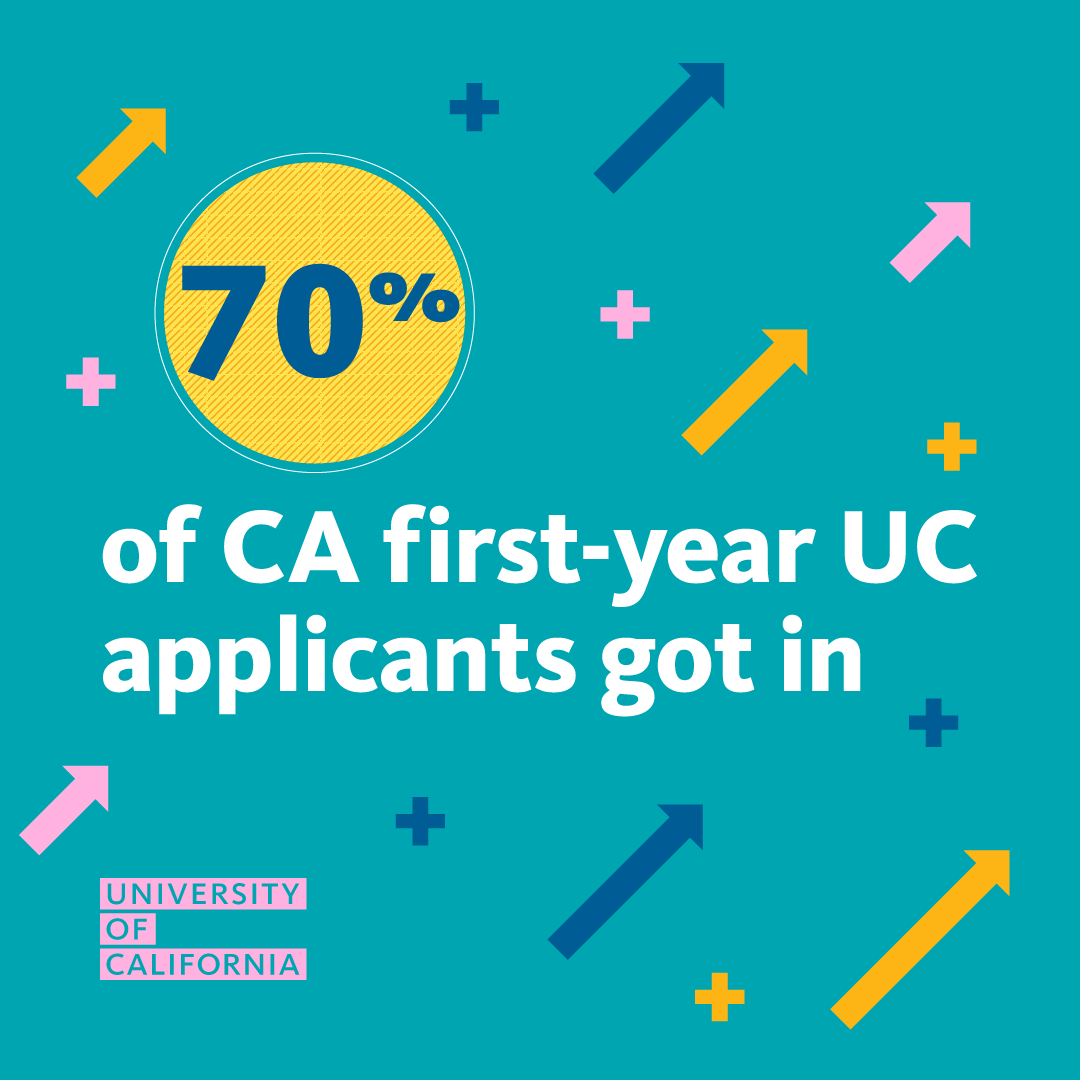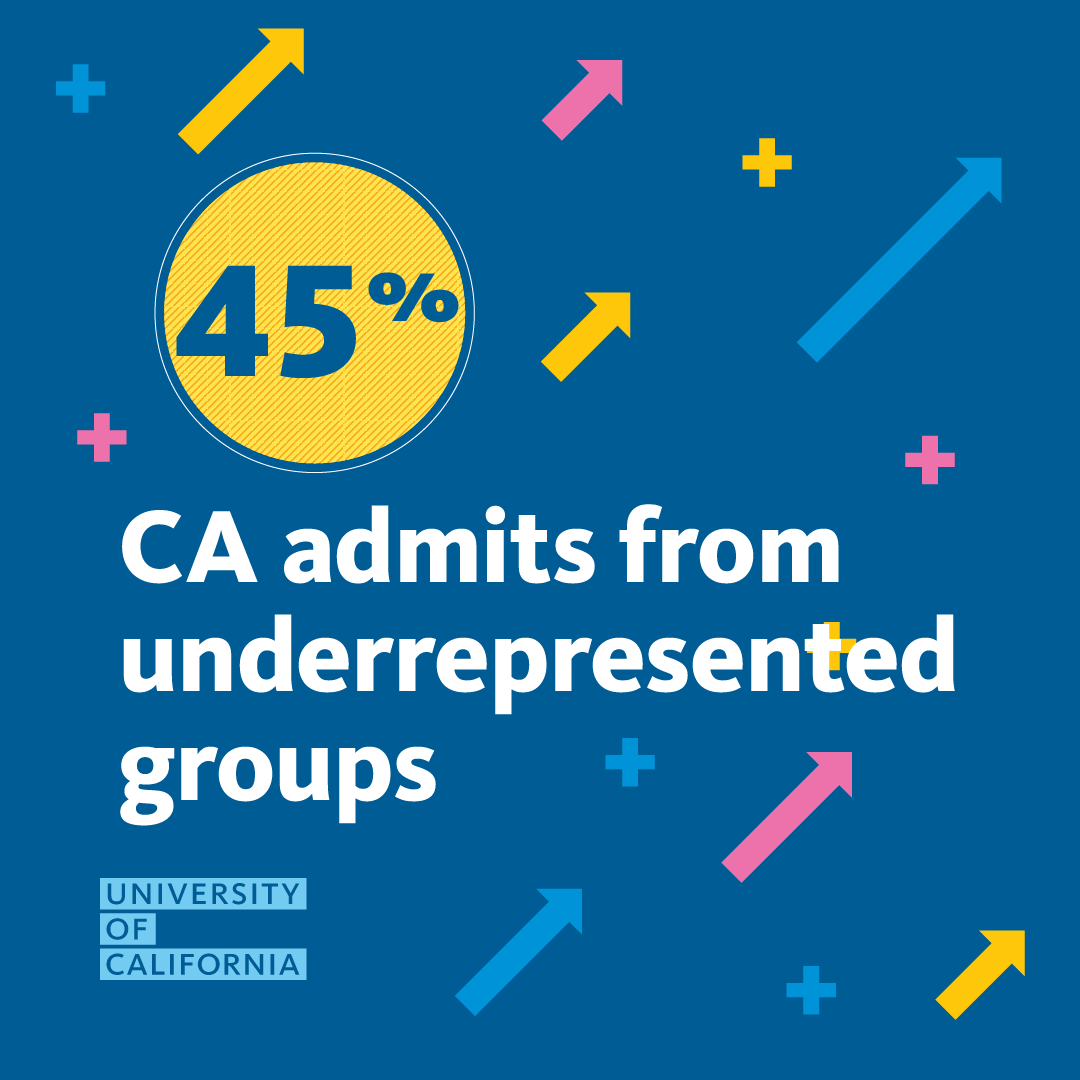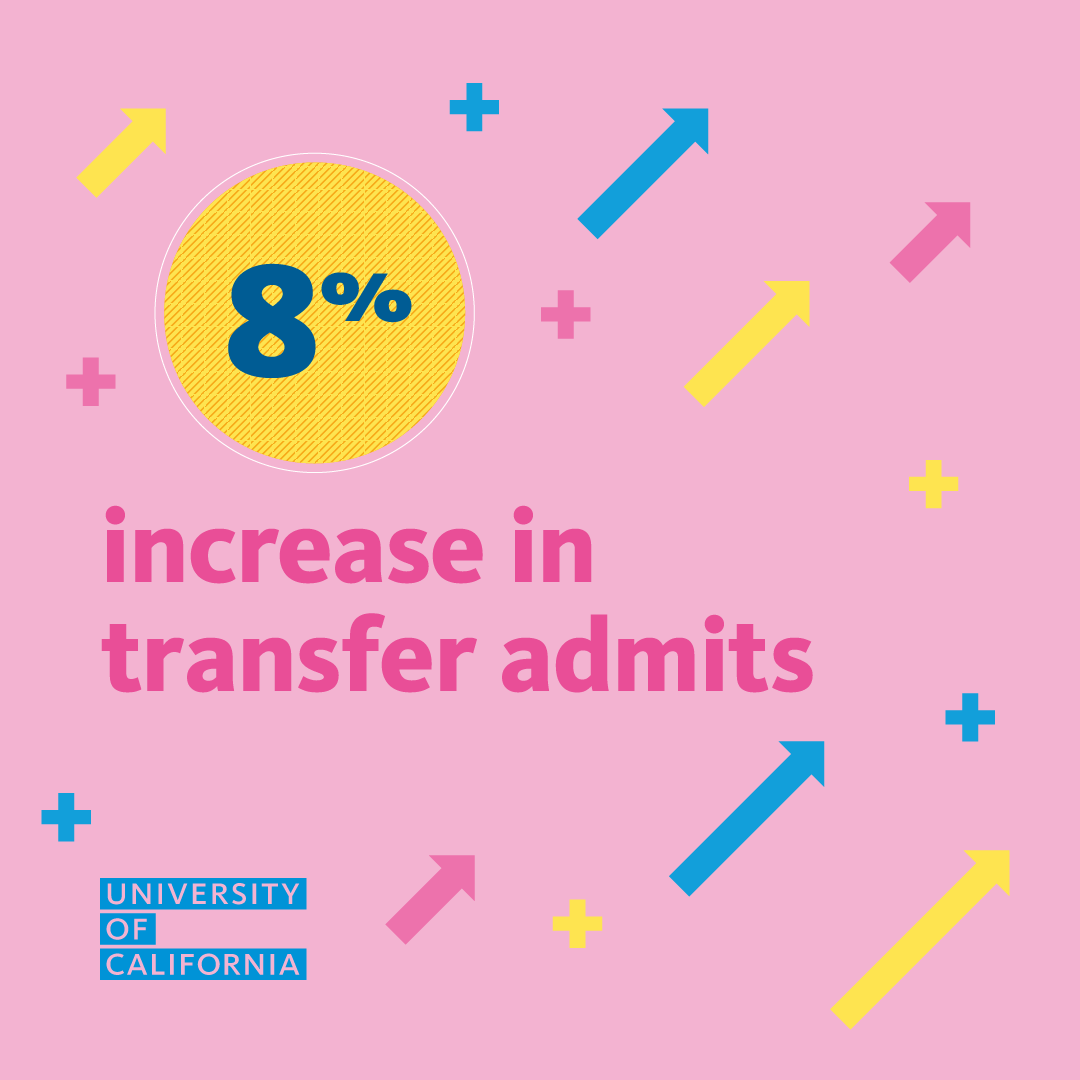The University of California announced today (July 31) that it has admitted its largest and most diverse class to date. This achievement is driven by significant increases in the number of California residents, underrepresented students, and California Community College (CCC) transfer students offered fall 2024 admission.

Overall, the University admitted a record 166,706 students (137,200 first-year and 29,506 transfer students). This included 93,920 first-year admission offers to California students, up 4.3 percent (3,867) from last year. This represents an all-time high for the number of California first-years admitted in a single year and is up more than 31,400 over 2014.
The admission rate for first-year California residents increased from 68 percent last year to 70 percent this year. UC is poised to enroll more California undergraduates than ever, building on systemwide progress toward the shared enrollment goals outlined in the budget compact with the state.
“These admissions numbers demonstrate the University of California’s commitment to expanding opportunity and access, especially for historically underrepresented groups, who comprise the largest-ever share of first-year students,” said UC President Michael V. Drake, M.D. “We’re setting more California students on the path to a college degree and future success, and that translates to positive impact on communities throughout the state.”
For the sixth consecutive year, UC’s fall 2024 class has set a historic milestone: The proportion of first-year students from underrepresented groups has grown to 45.4 percent, up 1.2 percentage points (2,772 students) from 44.2 percent for fall 2023 admission. The University remains a top choice for Latino students, who are again the largest demographic group of California admitted first-years at 38.6 percent, up from 37.7 percent last year. The proportion of admission offers to African Americans increased from 5.6 percent to 5.9 percent — an increase of almost 500 offers, or 10 percent more than last year. American Indian student admissions held steady at 0.6 percent of admitted students for a total of 569. The proportion of admission offers to white and Asian American students decreased slightly (0.8 percentage points each), with white students decreasing from 19.1 percent to 18.3 percent, and from 34 percent to 33.2 percent for Asian American students.

The proportion of admitted California first-year students who would be the first in their families to attend college grew to 43.1 percent from 42.5 percent last year. In a year that saw significant challenges associated with the launch of a new Free Application for Federal Student Aid (FAFSA), the percentage of students who reported low family incomes still increased to 40.7 percent from 39.7 percent last year, underscoring that California students continue to view a UC education as affordable and within reach regardless of their socioeconomic status. In partnership with the federal and state government, UC provides one of the nation’s most robust financial aid programs. More than half of our California undergraduates pay no tuition. In addition, families earning $80,000 or less have systemwide tuition and fees fully covered through the Blue and Gold Opportunity plan.
After a significant increase in applications from California Community College (CCC) students following pandemic-driven declines, the University offered admission to 26,430 students from CCCs, a 7.8 percent increase (1,906 students) from last year (24,524 offers). The proportion of admitted domestic CCC transfer students from underrepresented groups increased by 1.3 percentage points to 37.9 percent (36.6 percent in 2023). Like the first-year class, Latino students comprise the largest proportion of domestic CCC transfers, increasing to 31.2 percent, up 1.3 percentage points over fall 2023. African American CCC students remained at 5.6 percent of admitted students. The proportions of Asian American, white, and American Indian CCC transfer students decreased slightly from fall 2023. Asian American students decreased by 0.7 percentage points, white students decreased by 0.5 percentage points, and American Indian students decreased by 0.1 percentage points when compared to fall 2023. Additionally, the proportion of admitted CCC transfer students identifying as first-generation or having low family incomes slightly decreased by 1.1 percentage points and 0.2 percentage points, respectively (47 percent and 49.3 percent last year).

The admission rate for nonresident first-year students this year is 59.3 percent, up from 55.3 percent in 2023. Domestic nonresident offers grew from 23,696 in 2023 to 24,108 this year (412). Meanwhile, international student offers increased from 17,420 last year to 19,172 this year (1,752). UC campuses may admit nonresident and international students at higher rates due to anticipated lower yield, or the percentage of students who accept an admission offer. The University remains in compliance with the Regents’ Nonresident Policy and the Governor’s Multi-Year Compact expectation to reduce the proportion of nonresident enrollment with California residents.
While this admissions cycle is the first since the U.S. Supreme Court struck down affirmative action in June 2023, the University has long led the way in using a comprehensive admissions review process to comply with Proposition 209 while continuing to increase diverse student applications, admissions, enrollment, and retention. Since its implementation in 2021, UC’s test-free admissions policy has yielded positive student outcomes. First-year student retention remains high, with 92 percent of both the initial and subsequent cohorts continuing to their second year. These results mirror student success rates achieved under UC’s previous admissions policy, which required standardized testing for all first-year applicants.
“We are thrilled that the University of California continues to be a destination of choice for our state’s incredibly accomplished and diverse students,” said Han Mi Yoon-Wu, associate vice provost for Undergraduate Admissions at the University of California. “This success has been further bolstered by the University’s unwavering commitment to transforming the aspirations of California students into UC admissions offers. The University’s holistic admissions process, combined with our campuses’ deliberate work with high schools, community colleges, and community-based organizations, has helped highly qualified prospective students from all backgrounds plan and prepare for admission to our world-class campuses.”
Additional details about the University’s fall 2024 admits can be found here, along with preliminary campus-by-campus breakdowns.